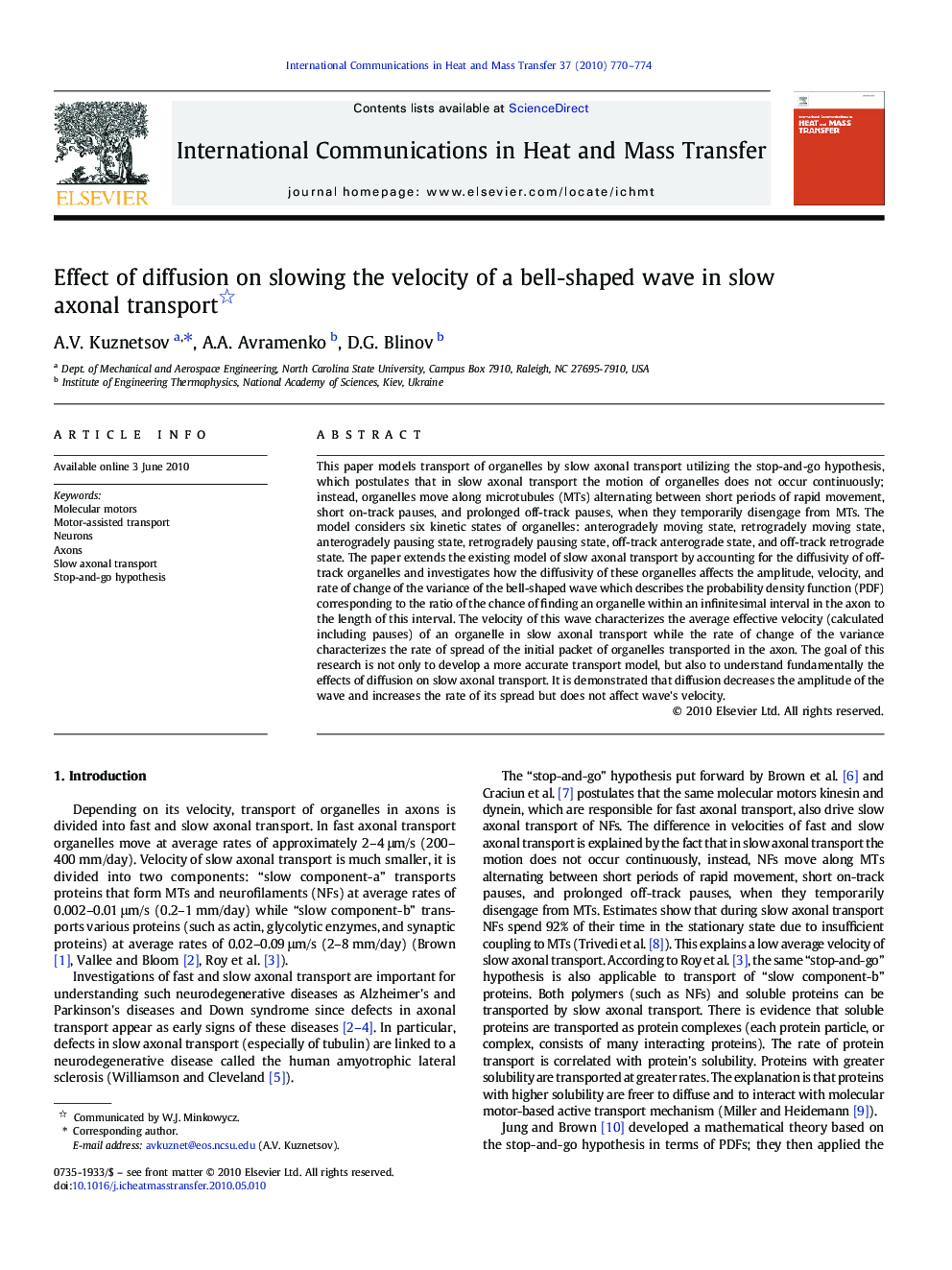| Article ID | Journal | Published Year | Pages | File Type |
|---|---|---|---|---|
| 654450 | International Communications in Heat and Mass Transfer | 2010 | 5 Pages |
This paper models transport of organelles by slow axonal transport utilizing the stop-and-go hypothesis, which postulates that in slow axonal transport the motion of organelles does not occur continuously; instead, organelles move along microtubules (MTs) alternating between short periods of rapid movement, short on-track pauses, and prolonged off-track pauses, when they temporarily disengage from MTs. The model considers six kinetic states of organelles: anterogradely moving state, retrogradely moving state, anterogradely pausing state, retrogradely pausing state, off-track anterograde state, and off-track retrograde state. The paper extends the existing model of slow axonal transport by accounting for the diffusivity of off-track organelles and investigates how the diffusivity of these organelles affects the amplitude, velocity, and rate of change of the variance of the bell-shaped wave which describes the probability density function (PDF) corresponding to the ratio of the chance of finding an organelle within an infinitesimal interval in the axon to the length of this interval. The velocity of this wave characterizes the average effective velocity (calculated including pauses) of an organelle in slow axonal transport while the rate of change of the variance characterizes the rate of spread of the initial packet of organelles transported in the axon. The goal of this research is not only to develop a more accurate transport model, but also to understand fundamentally the effects of diffusion on slow axonal transport. It is demonstrated that diffusion decreases the amplitude of the wave and increases the rate of its spread but does not affect wave's velocity.
